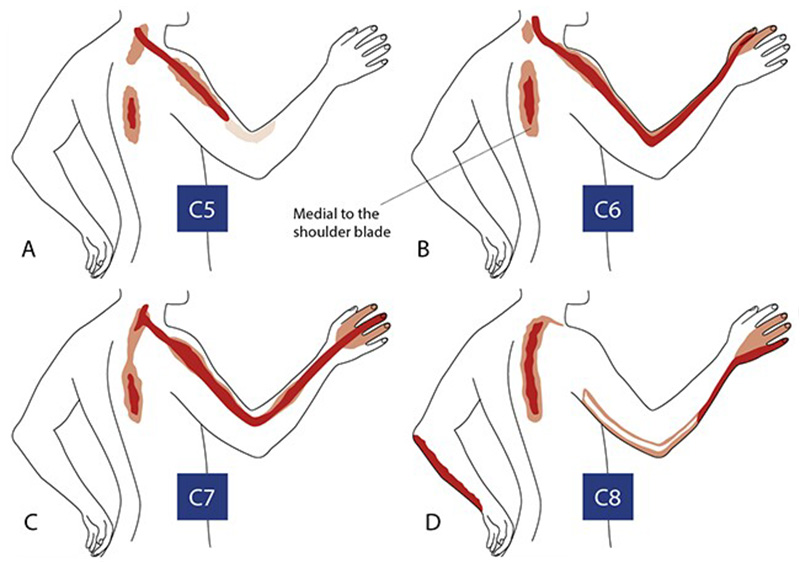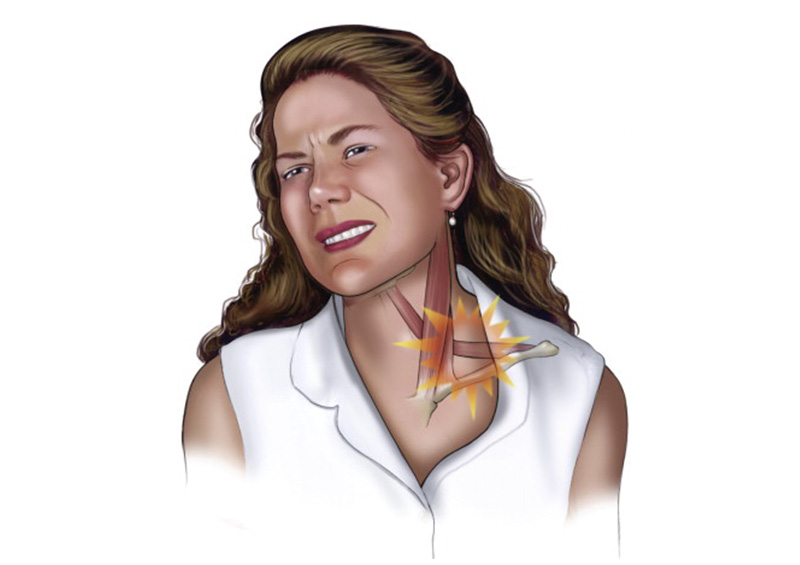Neck pain following a motor vehicle accident is common and can be serious if left untreated. There are multiple mechanisms of injury depending on the nature of impact, force, use of a seat belt, air bag deployment, and other factors. Seeing a qualified and experienced physician to diagnose your injuries is essential in your recovery process. Make sure your physician examines and documents each and every one of your injuries. Ask your physician about the injuries below.
Whiplash Injury – Whiplash injury describes the origin or the pain but is not the cause or source anatomically responsible for the pain. Whiplash injury is an acceleration-deceleration mechanism causing energy transfer to the neck. Multiple structures can be injured due to this mechanism of injury.


Ligaments – Ligaments can be sprained, stretched or torn. Generally, physical therapy is the best initial treatment and to avoid certain activities that can aggravate your injuries. Your physician may prescribe an anti-inflammatory and a muscle relaxant. If the pain continues after 6 to 8 weeks of physical therapy the ligaments may not be the only source of pain.

Cervical Radicular Pain – Radicular pain is secondary to chemical and/or mechanical compression of the nerves exiting in the neck. The pain is often described as shooting pain or as a “lightning” type of pain sensation. Physical therapy and medication may be prescribed as an initial treatment. If this treatment fails to relieve your symptoms an aggressive treatment will be prescribed for long term relief. Cervical epidural steroid injections are effective in reducing the chemical irritation and inflammation of the nerve root. It is recommended to have this treatment performed earlier rather than later, especially if you are suffering excruciating pain.

Cervical Facet Injury –Just like knees, shoulders and hips, cervical facet joints are true joints and can be severely damaged. They are the most commonly injured structures and are often missed as a pain generator. These joints do not adequately show up on MRIs scans. They can suffer intra articular fractures and hemorrhages. These injuries typically cause aching or a throbbing sensation. This pain increases when you look up and while turning the head side to side. Physical therapy and medication may be prescribed as an initial treatment. If this treatment fails to relieve your symptoms an aggressive treatment will be prescribed for long term relief. Diagnostic blocks are performed to diagnoses these injuries. A thermal ablation may be performed to relieve this pain and is a highly effective treatment. Dr. Parekh has performed over a 1,000 thermal ablations.

Cervicogenic Headaches – A frequent complain after a motor vehicle accident is debilitating headaches. The C2/3 facet joint is a commonly injured joint that leads to headaches that are unresponsive to medication management. Diagnostic blocks can help identify if this joint is responsible for the pain and thermal ablation can help alleviate these headaches. In fact, many times we are surprised at the results as the patients have complete and immediate resolution of their headaches following the procedure. Dr. Parekh has treated many patients successfully. For example, a pilot of a major airlines had to stop flying due to headaches. After treatment the patient was free of his headaches and was able to return to flying. Dr. Parekh uses a special technique with bipolar lesioning to ensure the appropriate areas are treated.

Omohyoid Syndrome – Patients who have sustained a flexion/extension injury of the neck may present with omohyoid syndrome. The pain is typically felt in the front of the neck by the clavicle into the anterior lateral area. The pain increase with movement of the muscle and while swallowing. A carefully performed steroid injection can give the patient tremendous relief.

